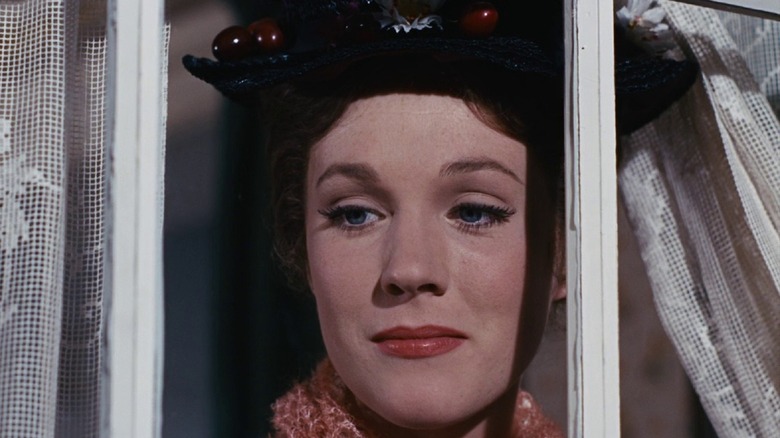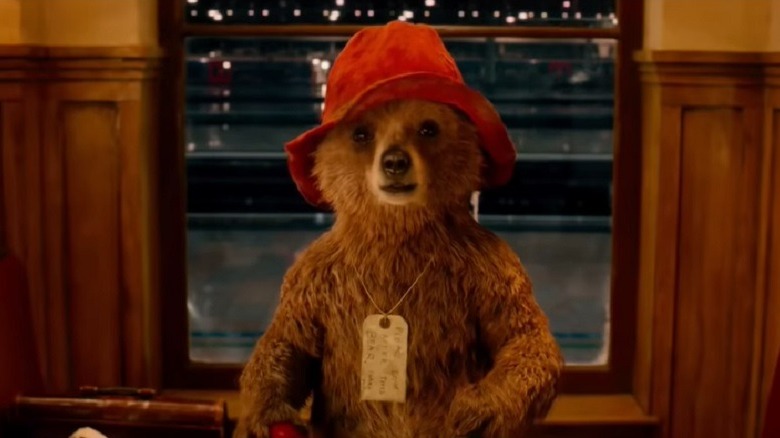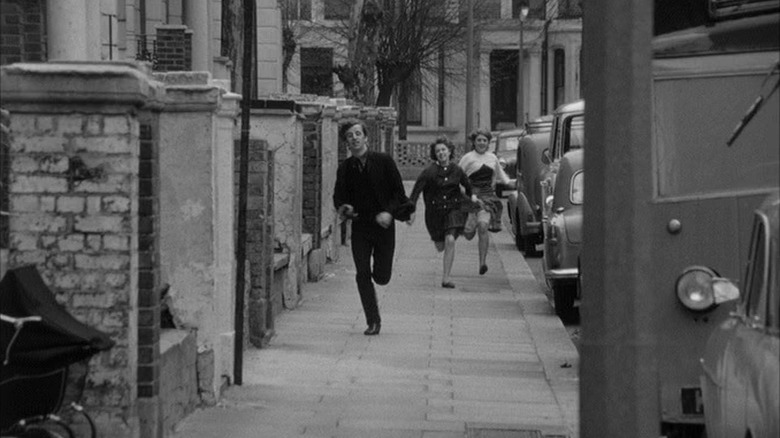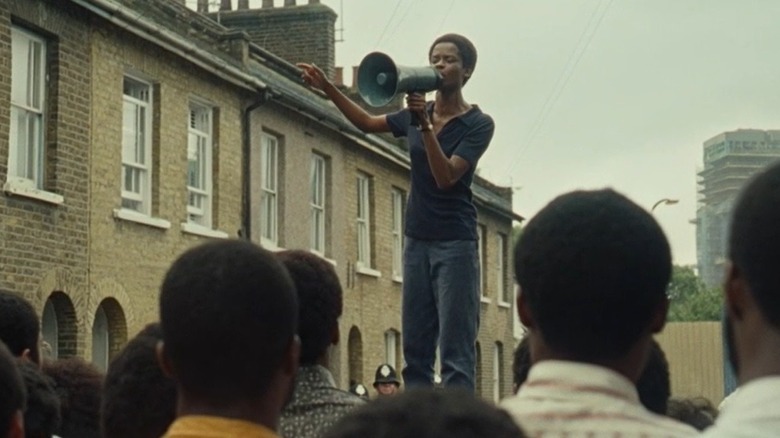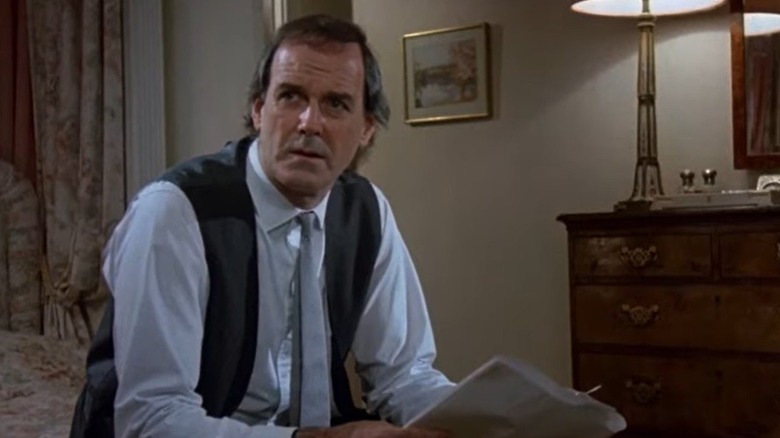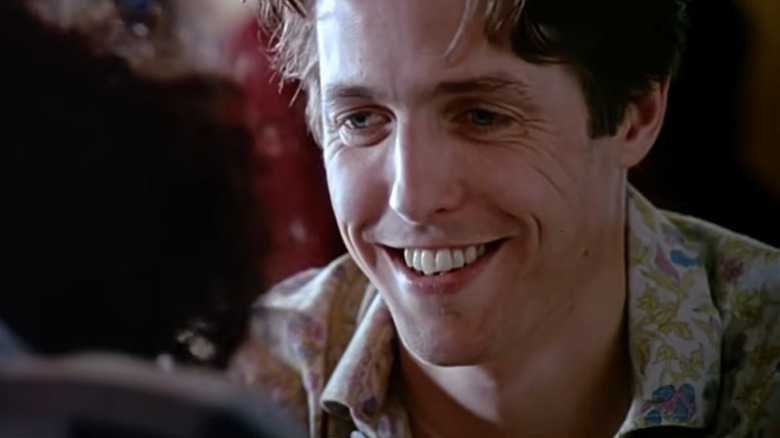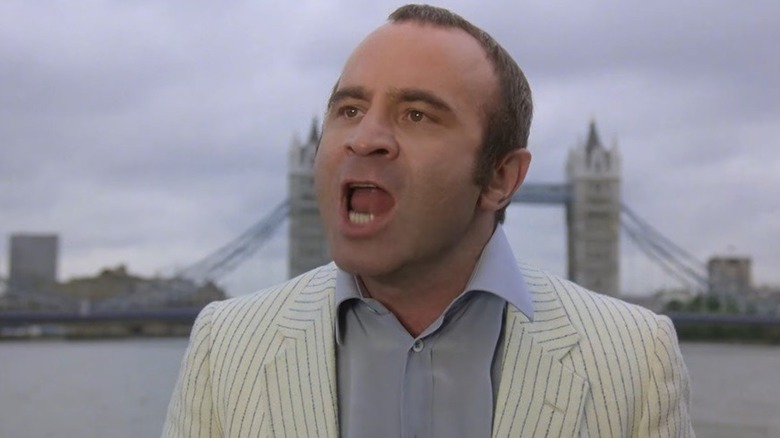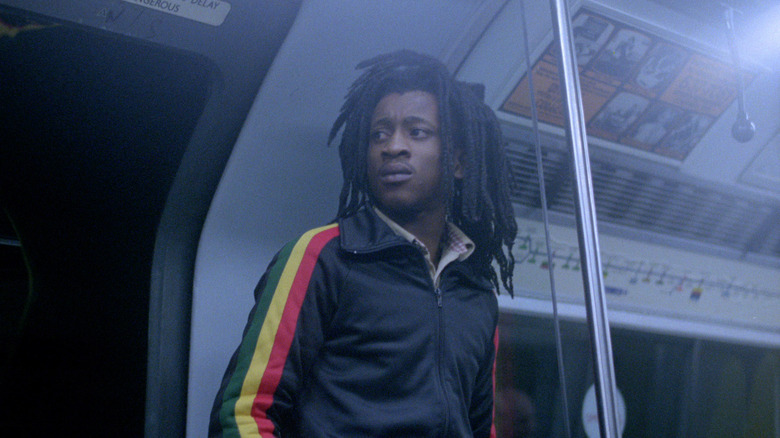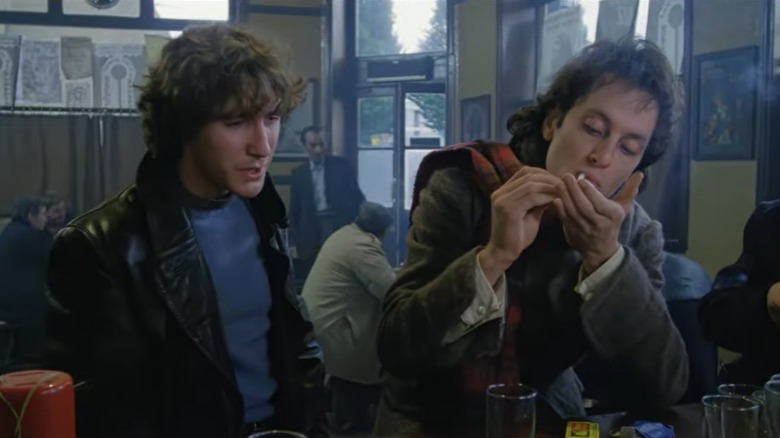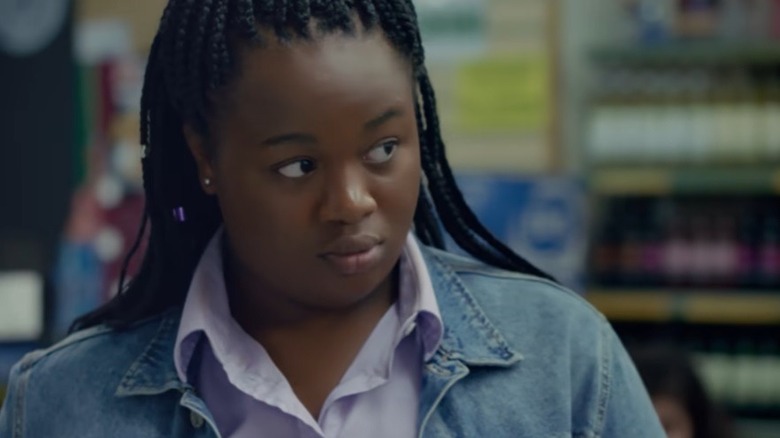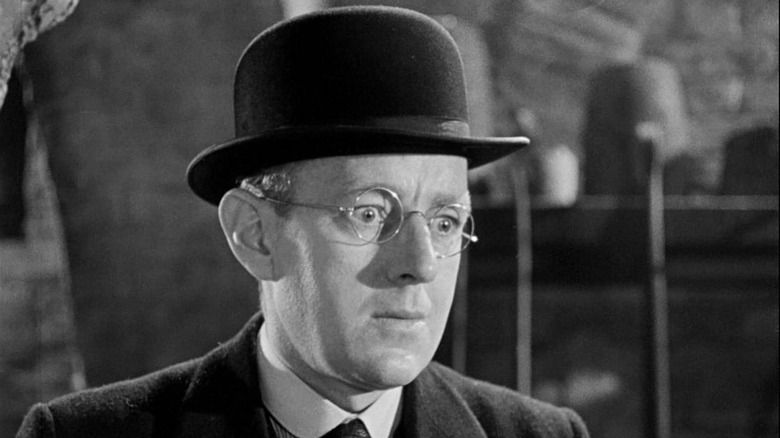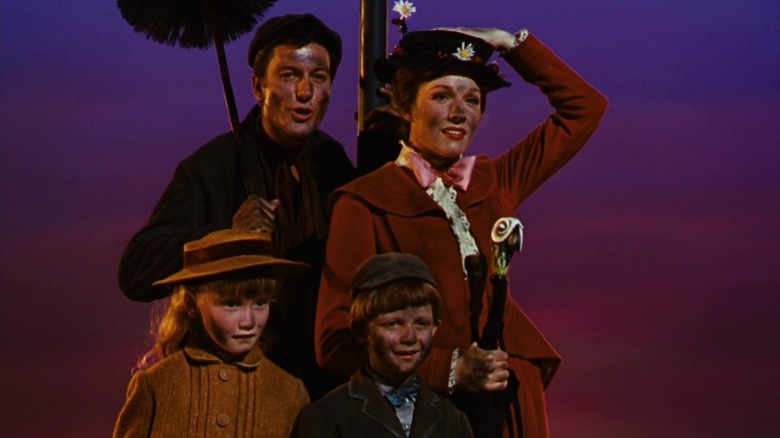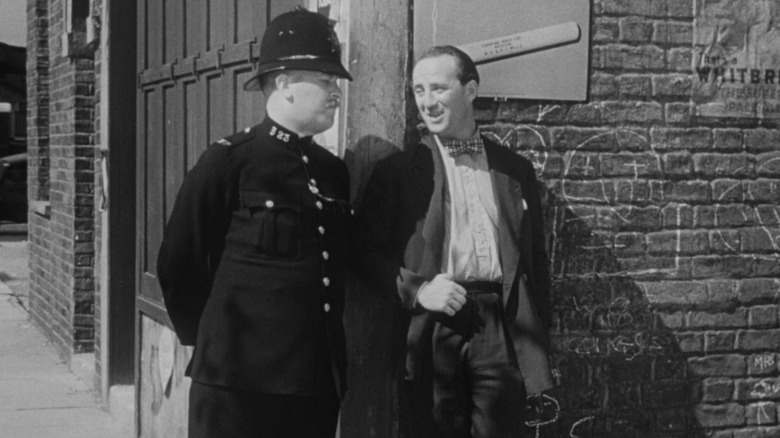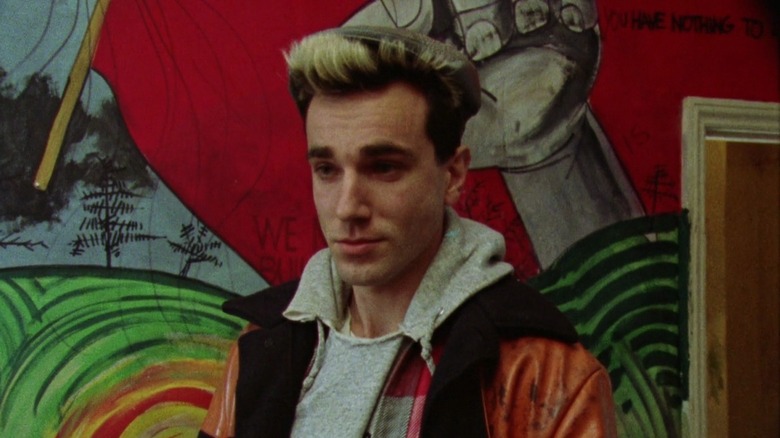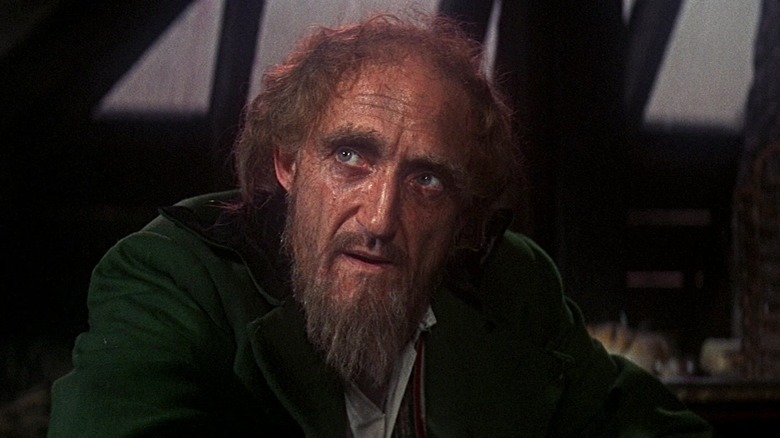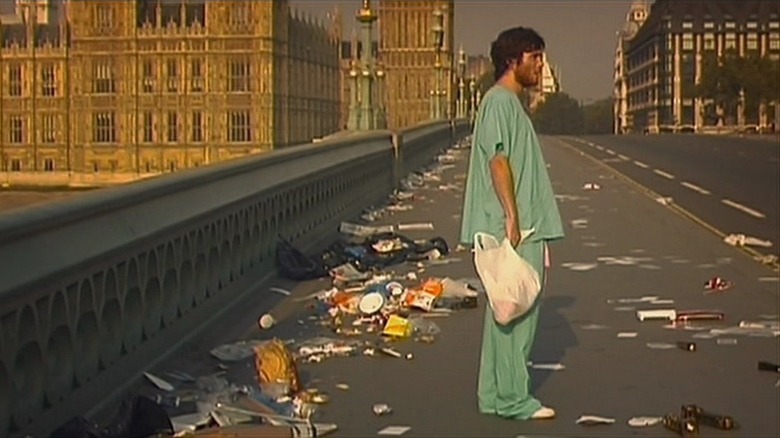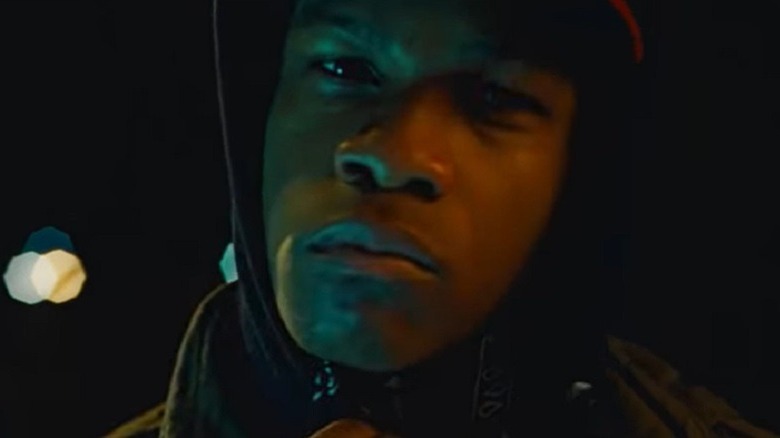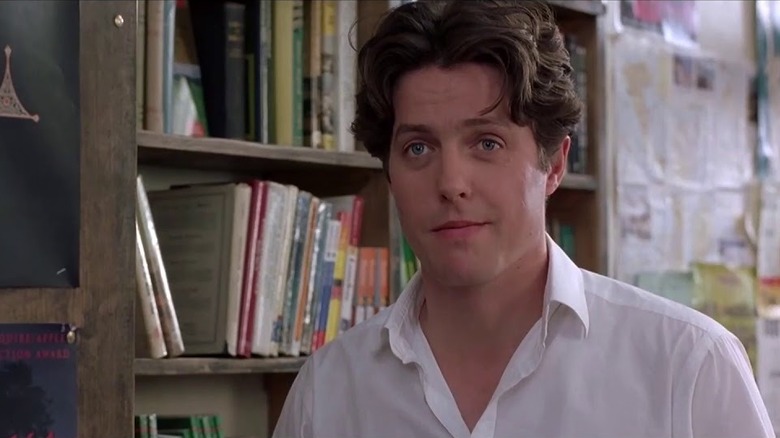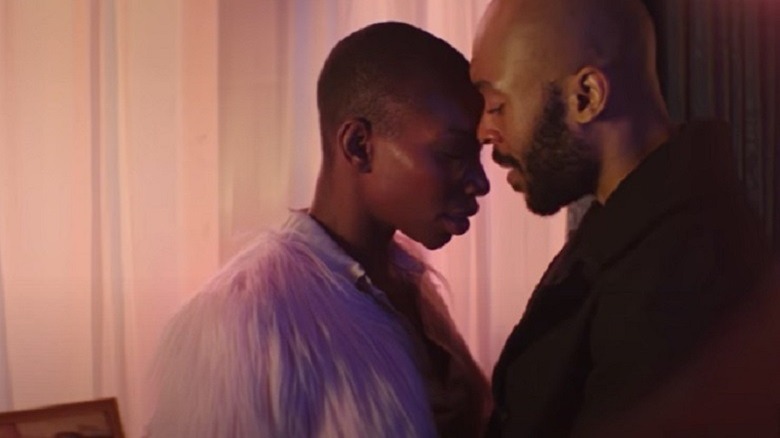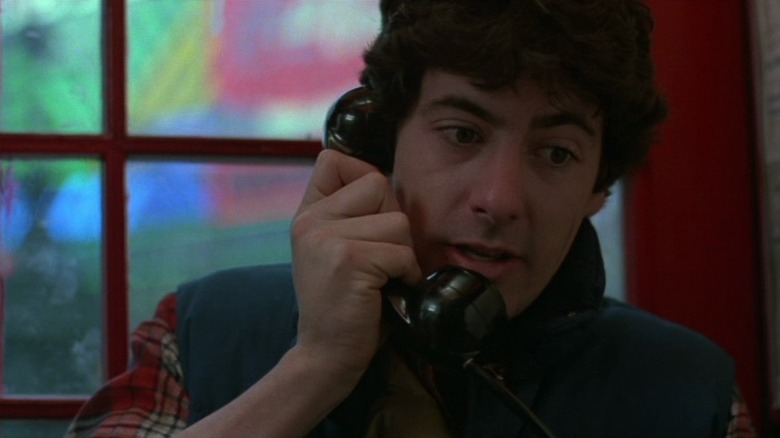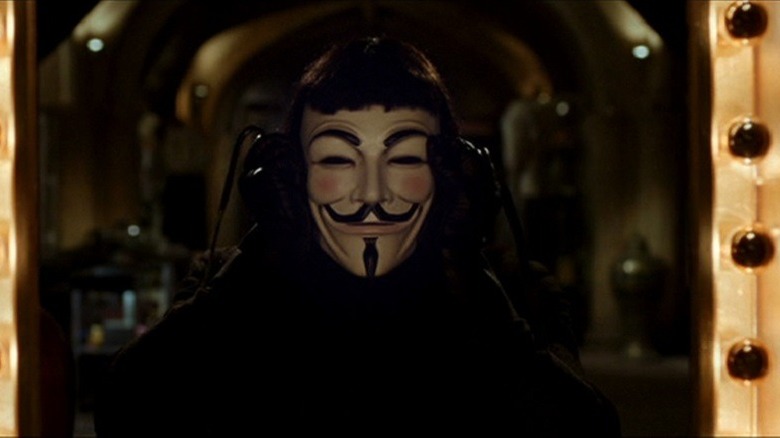The 20 Best Movies Set In London To Add To Your Watchlist
With its historical landmarks and iconic images — such as the red telephone boxes and black taxi cabs — London is an instantly recognizable location. Over the years, the U.K. capital has featured prominently in a number of movies, with the city coming alive on the big screen across a wide variety of genres. There is also a proud history of filmmaking in the capital, with studios such as Ealing, Elstree, and Pinewood located in, or very near to, the city center.
For many movie fans, London may be associated with the quintessentially British rom-coms starring Hugh Grant, or the gritty gangster films from directors like Guy Ritchie. London is a bustling, diverse city and many of the films set or filmed there seek to capture its unique identity. At times it feels like a city that never sleeps, with new things to be found around every corner, taking you from an important historical building one minute to a trendy restaurant or night spot the next.
From films that emphasize the whimsy and romanticism of the city to those that explore the occasionally harsh realities of life in a huge metropolis, there is a London-set movie to suit all tastes. These are 20 of the best movies set in London that you need to add to your watchlist.
Paddington
Named after the London train station where the titular bear (voiced by Ben Whishaw) finds himself, 2014's "Paddington" offers a romanticized portrait of the city that stays true to the whimsy of Michael Bond's beloved children's stories. Beginning in the jungles of "Darkest Peru," we meet a family of bears with a penchant for marmalade sandwiches: Uncle Pastuzo (Michael Gambon), Aunt Lucy (Imelda Staunton), and an as-yet-unnamed cub. After a tragic event destroys their home, Lucy encourages the young bear to move to London to start a new life, where he is taken in by the reluctant Brown family.
For Paddington, London represents comfort, as well as the opportunity for a fresh start. While the head of the Brown family — the stoic Henry Brown (Hugh Bonneville) — takes a little longer to warm to the mischievous bear, it isn't long before he finds a home amongst London's memorable landmarks. The vibrancy of the film is reflected in its locations: The Brown family lives in the picturesque Chalcot Crescent in Primrose Hill, and several scenes take place in Portobello Road's colorful, bustling market. The climax of the film — a showdown with the villainous Millicent Clyde (Nicole Kidman) — is set in London's iconic Natural History Museum, and the dramatic architecture is the perfect backdrop for these equally dramatic scenes.
"Paddington" proved to be a huge success with critics. Variety critic Guy Lodge praised the film for "affectionately honoring the everyday quirks of Bond's stories, while subtly updating their middle-class London milieu."
A Hard Day's Night
Released in 1964 at the height of "Beatlemania," The Beatles' first feature film is a fun and frivolous comedy following the band as they prepare for a television performance. Opening with them running from screaming fans in their native Liverpool, they board a train to London where they are met with similar chaos. The band's antics in this mockumentary-adjacent farcical comedy see them frolicking in the streets of London in the swinging '60s.
"A Hard Day's Night" barely has a plot to speak of, but it's still tremendous fun — full of silly skits and Monty Python-esque surreal humor that serves to showcase the band's personalities as well as their musical talent. One of the highlights is when drummer Ringo Starr goes missing and embarks on a solo wander around some of the lesser-known parts of London. "A Hard Day's Night" doesn't just rely on the obvious tourist landmarks, but instead takes us along some of the back streets to the clubs, theaters, and pubs of the city, making this a thrill for locals and would-be visitors to London to watch.
The music speaks for itself, and some of The Beatles' all-time greatest songs are featured in "A Hard Day's Night." While it demonstrates signs of its age now, it also has an irreverent charm and youthful energy that makes it feel fresh and exciting. It provides fascinating insight into '60s London — arguably one of the most exciting decades for the city.
Mangrove
Forming part of the "Small Axe" series from director Steve McQueen, "Mangrove" details the true story of a West London restaurant in a time of intense racial discrimination. Frank Crichlow (Shaun Parkes) — the owner of the establishment — prides himself on keeping his premises at the heart of the lively community free of any trouble that would threaten them with closure. As tensions in the neighborhood build, the Mangrove finds itself relentlessly raided by the police, leading to peaceful protests and an ensuing trial as Frank and eight others fight to clear their names.
Even though "Mangrove" feels firmly rooted in its late '60s into early '70s setting, its themes and issues are unfortunately still very relevant. It is an important story to tell, as many of the freedoms people now know are because of those who fought for justice, and it is a testament to the wonderfully rich and diverse cultures that make London what it is. "Mangrove" celebrates a community and the power of a collective voice to stand up for what is right.
While it aired on BBC in the U.K. and Amazon Prime worldwide, "Mangrove" still feels distinctly cinematic, and its powerful performances and message leave a lasting impression. The "Small Axe" series received praise for the way it depicted Black life in Britain, with K. Austin Collins for Rolling Stone saying it was "some of his [McQueen's] sharpest, most sensitive work."
A Fish Called Wanda
There is a certain throwback charm to this British heist movie, with veteran Ealing Studios director Charles Crichton at the helm. When you throw two British comedy icons — "Monty Python" stars John Cleese and Michael Palin — into the mix alongside American actors Kevin Kline and Jamie Lee Curtis, you've got the makings of a classic. It focuses on a diamond heist, orchestrated by British gangster George Thomason (Tom Georgeson) and his stuttering assistant, Ken Pile (Palin). Hired to steal the valuable jewels are a pair of American thieves (Kline and Curtis), but things take a turn when they attempt to double-cross George — and each other.
There are plenty of recognizable London locations used in this film, with the heist taking place in Hatton Garden — the center of the city's diamond trading businesses — and some key scenes set around London's historic courthouse, the Old Bailey. While the locations make this feel like a thoroughly British affair, the fact the criminals are from both sides of the pond creates ample opportunities for the characters to take aim at each other — including a particularly foul-mouthed exchange between Otto and lawyer Archie (Cleese).
"A Fish Called Wanda" ultimately became one of the highest-grossing films of 1988. It was also recognized by the Academy, nominated for three awards and winning best supporting actor for Kevin Kline. "A Fish Called Wanda" has been hailed as one of the best British films by the BFI, placing 39th on their list (via BBC).
Four Weddings and a Funeral
In the '90s, Hugh Grant was the undisputed leading man of choice for British romantic comedies, and with writer Richard Curtis thrown into the mix, you have the perfect ingredients for an unforgettable film. In "Four Weddings and a Funeral," Grant plays Charles, a seemingly unlucky-in-love man who is watching all of his friends get married before him. His fortunes change at one of the titular four weddings, when he meets a beautiful American woman named Carrie (Andie MacDowell). As Charles and Carrie's paths continue to cross, it seems that they may be destined to be together.
"Four Weddings and a Funeral" makes the most of its talented cast, creating a friendship circle that feels cozy and aspirational. While the nuptials and funeral take place across the U.K., "Four Weddings and a Funeral" is still a film that celebrates London, with key scenes taking place in some of the leafier, more picturesque areas of the city, such as Greenwich and Hampstead.
Often celebrated as one of the all-time great romantic comedies, "Four Weddings and a Funeral" earned two Oscar nominations for best picture and best screenplay. With a relatively small budget of just over $4 million, the film was hugely profitable, taking over $245 million worldwide, and becoming one of the highest-grossing films of 1994.
The Long Good Friday
Setting the bar for Guy Ritchie's late '90s and early '00s British gangster movies, "The Long Good Friday" dives into the gritty criminal underbelly of London. Harold Shand (Bob Hoskins) is a crime boss with dreams of becoming a property magnate and developing part of London's docklands with some of his American counterparts. After his properties are attacked over the Easter weekend, Shand begins to suspect someone close to him is conspiring against him — and he plans to find out who it is, whatever it takes.
Tying together some of the hot-button issues at the time — including corruption and the rise of terrorist groups — "The Long Good Friday" presents a rough and ready version of London with an undeniably nasty streak. If you know Bob Hoskins best for his roles in family-friendly films such as "Hook" and "Who Framed Roger Rabbit," his performance as the foul-mouthed Harold Shand may be a shock to the system, but it is equally a testament to his versatility as an actor.
Also starring Helen Mirren, Eddie Constantine, and Pierce Brosnan (in his feature film debut, no less), "The Long Good Friday" is a darkly comedic and often shockingly violent British gangster classic. Mostly filmed around the East End of London, there is a sense of realism to this film that proved to be hugely influential: Empire included it in the top 20 on their list of the 100 best British films.
Babylon
This underrated film is a landmark moment in Black cinema in the U.K., and one that for many years was unavailable to see across the pond. Considered to be "incendiary," the cult film was overlooked by New York Film Festival following screenings at Cannes and Toronto International Film Festival (via Screen Daily), remaining largely unseen stateside until almost 40 years after its original release in 1980.
"Babylon" focuses on an aspiring young DJ called Blue (Brinsley Forde), living in a Thatcher-era, racially divided South London. While solace is found for Blue in the thriving underground reggae music scene, the film doesn't shy away from the harsh realities of being a young Black man in London at this time. Faced with discrimination almost everywhere he turns, "Babylon" is particularly evocative in its depiction of racially motivated police brutality — something that makes it feel distressingly relevant to society today.
With a pulsing reggae soundtrack, and a cast made up of talented musicians and actors, "Babylon" is an important film that perfectly balances its thematic heft with its realistic depiction of London in the '80s. While it has a degree of specificity to a certain time and place, it has a timeless resonance that still packs a punch some 40 years later. Reviewing the 2019 release of the film for the Los Angeles Times, Robert Abele called it, "a raw, propulsive, and authentically music-driven glimpse of South London Black culture."
Withnail and I
Now a certified British national treasure, Richard E. Grant's first major movie role was as the flamboyant, sarcastic, out-of-work actor, Withnail — a far cry away from his later work, but one of his most memorable characters. Withnail lives in a shabby London apartment with his friend and fellow actor, Marwood (Paul McGann). Even though the pair spends more time at their local pub than they do trying to find work, they decide to get away from it all by taking a holiday in the English countryside — a decision that proves to be fraught with trouble from the start.
While the storyline dictates that the pair leave the hustle and bustle of the city for a spell, "Withnail and I" still owes a great deal to London. While said to be in Camden, Withnail and Marwood's flat is actually located in Notting Hill (via Far Out) — now a very prosperous part of the city. Early in the film, the pair are also seen walking through London's Regents Park — which later becomes the setting for Withnail's impassioned monologue to the animals of the park's zoo.
Foul-mouthed, endlessly quotable, and with an unmistakably British sense of humor, "Withnail and I" is considered a cult classic. With its own drinking game and a host of celebrity fans including Margaret Cho, Paul Rudd, and Steve Martin (via Los Angeles Times), "Withnail and I" is a rare gem that manages to transcend its inherent Britishness to become a revered comedy masterpiece.
Rocks
Movies set in London often emphasize the more idyllic parts of the city, creating a sense of romanticism by using the famous architecture and iconic images that are often associated with it. "Rocks" is a very different film, yet it has a proud and clearly defined London identity that reflects the modern side of the city. The film focuses on teenager Rocks (Bukky Bakray) and her group of friends as they navigate the ups and downs of life, school, and the looming future. For Rocks, however, there is extra complexity to deal with when her mother unexpectedly leaves her and her younger brother to fend for themselves.
Opening with the group of teens as they look out over the city's famous skyscrapers, the story is scaled back to Rocks' home in Hackney. Through the dialogue, soundtrack, and naturalistic performances, "Rocks" is a thoroughly modern London film with a rich, authentic depiction of London teen life. While it never shies away from the difficult family situation that Rocks is forced to face, it also captures a youthful feeling of joy, hope, and uncertainty.
A beautifully observed coming-of-age story, "Rocks" is a film about growing up too fast that feels firmly rooted to the small corner of London that it calls home, yet speaks about universal themes. "Rocks" may have only had a modest cinematic release, but it was a big critical success, with The Guardian's critic Mark Kermode calling it "a wonderful, heart-breaking, life-affirming gem of a movie."
The Lavender Hill Mob
Released in 1951, this Ealing Studios comedy is a classically British heist movie, set in the heart of London's major financial institution, the Bank of England. Henry Holland (Alec Guinness) — now living the high life in Rio de Janeiro — recounts the story of how he robbed the bank. Responsible for supervising the deliveries of gold bullion from the refineries to the bank, Holland saw vast fortunes pass him by every day. With the help of artist Alfred Pendlebury (Stanley Holloway) and two petty criminals (Sid James and Alfie Bass), the mob hatch a plan to steal the bullion and melt it down to be disguised as Eiffel Tower paperweights.
"The Lavender Hill Mob" is a farcical and wildly entertaining film, with the far-fetched and outrageous plans wonderfully contrasting with the buttoned-up, austere feeling of Britain at this time — embodied by the bank that becomes the gang's target. With extensive scenes at London's iconic Bank of England, and with its name taken from the Battersea boarding house where the mob is formed, "The Lavender Hill Mob" owes a great deal to the city in which it is set.
Featuring excellent performances across the board, "The Lavender Hill Mob" is a thrilling crime caper that keeps the surprises coming right to the end. As well as having an enduring legacy as one of the best British films, "The Lavender Hill Mob" was rewarded upon its release, winning the Oscar for best writing, and the BAFTA for best British film.
Mary Poppins
This 1964 musical about a "practically perfect" magical nanny turns the city of London into a colorful playground where the only limit is your imagination. Based on the books by P.L. Travers, "Mary Poppins" sees Julie Andrews in her feature film debut, flying into the lives of the precocious Banks children (Karen Dotrice and Matthew Garber) after their wish for a new nanny comes true. As she takes Jane and Michael on a magical journey through the city, they get to experience the freedom and joy they were craving, while their father (David Tomlinson) learns an important lesson about being present in his children's lives.
While the film itself was entirely shot in Disney's Burbank studios, it captures the feeling of Edwardian London, thanks to the exquisite matte paintings by artist Peter Ellenshaw, who won an Oscar for the special visual effects in this film. From the fictional Cherry Tree Lane that the Banks family call home (heavily inspired by the affluent streets of Kensington and Chelsea), to the smog and dirt that rises above the rooftops, "Mary Poppins" transforms London into an imaginative fairytale world.
"Mary Poppins" was a huge success for Disney, making more than $103 million worldwide. Receiving acclaim at the Oscars — where it was nominated for thirteen awards and won five — "Mary Poppins" was hailed by critics, including The Hollywood Reporter's James Powers, who called it, "a triumph of many individual contributions."
Passport to Pimlico
Set in post-war London, this Ealing Studios film focuses on a small area of the city where the aftershocks of the conflict are felt in more ways than one. When an undetonated bomb is discovered beneath the streets of Pimlico, it reveals a treasure trove of artifacts, treasures, and documents. One of these documents stipulates that Pimlico is owned by the French Duke of Burgund and, as such, is no longer part of Britain. Upon learning of this, Pimlico descends into a near-lawless state, no longer bound by post-war rationing restrictions and rules.
"Passport to Pimlico" perfectly captures the eccentric and quirky characters that you meet in London — particularly when they are able to throw off the shackles and live life with the frivolity that war had denied them. It also features some whip-smart and wonderfully astute satirical observations of Londoner's skepticism toward outsiders or "foreigners" — again speaking to the attitudes of many after the war.
While very much a product of the period in which it is set, "Passport to Pimlico" also feels surprisingly fresh. The residents of Pimlico are initially overjoyed to be a law unto themselves, however, the reality of the situation quickly sinks in when supplies are cut off and bureaucratic borders present a unique set of problems. This notion feels oddly reminiscent of Brexit. Writing for the Radio Times, Barry Norman reflected on the foretelling of "Passport to Pimlico," saying, "it reflects in microcosm what the nation has just been through."
My Beautiful Laundrette
The '80s were a particularly tumultuous period in London, with brewing racial tensions, mass unemployment, and economic struggles, presided over by the divisive Prime Minister Margaret Thatcher. With the introduction of "Section 28" — a controversial piece of legislation that prevented councils and schools from "promoting the teaching of the acceptability of homosexuality" (via BBC) — it was an especially harrowing time for LGBT+ people as well.
"My Beautiful Laundrette" tackles both the racial tensions and prevalent homophobia in London at the time. Set around the Wandsworth area of South London, the film focuses on a young Pakistani man, Omar (Gordon Warnecke), and his relationship with Johnny (Daniel Day-Lewis), who is hired to help renovate the run-down laundromat owned by Omar's uncle Nasser (Saeed Jaffrey). While it might not be a film that celebrates the well-known landmarks of London, it is one that feels incredibly authentic. Its ability to tell a widely impactful story in a small corner of London — with all the locations mostly within walking distance of each other (via BFI) — is one of the things that makes this film so special.
Daniel Day-Lewis' fresh-faced appearance as the reformed racist in "My Beautiful Laundrette" was a sign of the great things to come for the actor, who just five years later would receive his first Academy Award for "My Left Foot." Offering a realistic slice of London life, "My Beautiful Laundrette" is a quietly revelatory queer cinema classic.
Oliver!
Based on the Charles Dickens classic "Oliver Twist," this lavish period musical recreates the poverty and hardships of London in the 1800s. After escaping from the workhouse, orphan Oliver Twist (Mark Lester) finds himself on the mean streets of London, where he is taken in by street urchin and pickpocket, the Artful Dodger (Jack Wild), before joining the gang of criminal kids led by Fagin (Ron Moody).
The subject matter may appear to be bleak, but there is great joy in this beloved musical as well, thanks to some exuberant and beautifully choreographed musical numbers. Even though the film was shot entirely in a studio, the labyrinthine set still manages to capture the danger, excitement, and possibilities that lurk around every corner for our protagonists. One of the standout sequences — as the street-sellers fill the beautiful Bloomsbury Square for the song "Who Will Buy?" — is so painstakingly staged that it's hard to believe it isn't filmed on location.
Earning eleven Oscar nominations and winning five including best picture and best director, "Oliver!" was a resounding success with audiences and critics. Roger Ebert called it "a treasure of a movie" and said it was "a splendid experience." The timelessness of "Oliver!" and its status as a cultural institution is evident in how much it is still adored today, with Time Out and the BFI both including it in their lists of the best British films.
28 Days Later
The depiction of London in this dystopian horror may not be one you'd want to visit, but it is certainly memorable. Those who have visited the bustling city before will know it is rarely quiet — making the opening scenes even more disturbing. Awaking from a coma following a car accident, Jim (Cillian Murphy) learns that a mass infection has spread, turning people into rage-fuelled, zombie-like creatures. Joining forces with a small group of uninfected people, Jim attempts to make it to the supposed safety of a military blockade in Manchester.
While the action moves outside of London as the film progresses, the scenes of Jim walking through a deserted and eerily silent city — past major landmarks such as the Houses of Parliament and Piccadilly Circus — is the enduring image of Danny Boyle's chilling film. The London iconography continues, with Jim walking past an overturned red bus, and a black taxi cab becoming their getaway vehicle. Shooting these scenes proved to be a major challenge, with the crew shooting early in the morning on Sundays and working quickly — shutting down portions of London for a few minutes at a time (via Time Out).
Made on a budget of just $8 million, "28 Days Later" was a box office hit, making around $85 million worldwide. "28 Days Later" is a film that wears its cultural identity on its sleeve, which struck a chord with critics. Empire's Kim Newman raved about the film, calling it, "The best purely British horror/science-fiction film in decades."
Attack the Block
What would happen if aliens chose to invade a decidedly rough area of South London? This is the premise of "Attack the Block," with the extraterrestrial invaders meeting a formidable foe in the form of a gang of youths. After mugging a young woman (Jodie Whittaker) on the streets of a fictional part of South London, Moses (John Boyega) and his gang witness something fall from the sky. As they head off in pursuit of the mysterious creature, it seems they may have bitten off more than they can chew, and these unlikely heroes are tasked with defending their block from the invaders.
Notable for a number of reasons, "Attack the Block" marked the breakout feature film role for John Boyega, who reached superstar status after he was cast in "Star Wars: The Force Awakens" as the reformed stormtrooper Finn. Also featuring Jodie Whittaker — who went on to become the 13th Doctor in "Doctor Who" — "Attack the Block" blends genuine scares with sharp social commentary, highlighting a very specific part of London, even though it isn't named.
As well as being a frenetic and funny sci-fi thriller, "Attack the Block" also explores gang and youth culture in London. Owing a certain debt to Edgar Wright's filmmaking style — Wright is in fact a friend of this film's director, Joe Cornish (via Empire) — "Attack the Block" similarly explores uniquely British culture through the lens of genre cinema.
Notting Hill
Named after the colorful, affluent London borough, "Notting Hill" is a quintessentially British rom-com. It stars Julia Roberts as the fictional Hollywood actress, Anna Scott, who bumps into divorced bookshop owner, Will (Hugh Grant). The charming will-they-won't-they relationship that ensues is set against the backdrop of some of London's most picturesque sights, painting an idyllic portrait of both the city and love. Filmed predominantly on location — albeit with the interiors shot in a studio — "Notting Hill" opens with Will walking along the bustling streets of Portobello Road on a busy market day, creating a sense of authenticity and establishing London as a character in and of itself.
Directed by Roger Michell and written by the master of the British rom-com, Richard Curtis, "Notting Hill" may be predictable and inconsequential fluff, but it remains a classic of the genre in part due to the magnetic lead performances. While the fairytale love story is at the heart of this film, it has a much broader appeal thanks to the quirky and eccentric supporting characters — particularly Will's foul-mouthed Welsh housemate, Spike (Rhys Ifans).
Despite coming up against "Star Wars: Episode I – The Phantom Menace" at the box office, its perfect blend of comedy, romance, and whimsy ensured it was a commercial success, making just shy of $364 million worldwide. It also proved to be a hit with critics, with The Guardian's Peter Bradshaw saying, "For all its cheesiness, Notting Hill delivers a very great deal of pleasure."
Been So Long
Opening with a shot of the iconic Camden lock bridge and the uniquely eclectic architecture of the trendy London borough, the city's identity is stamped all over this romantic musical. Simone (Michaela Coel) is a single mother with seemingly no interest in getting out there and finding love again. When she is dragged out for a night on the town by her best friend Yvonne (Ronke Adekoluejo), Simone meets the handsome stranger, Raymond (Arinzé Kene), and the pair form an instant connection.
While the tone is a little uneven in this film — particularly the sub-plot involving the jealous Gil's (George MacKay) quest for revenge — the performances from Coel and Kene really sell the story. The musical elements make "Been So Long" feel like a modern fairytale, and the sizzling chemistry of the two leads is particularly electric against the backdrop of the neon lights of romantic London.
As well as sweeping us away with its surprisingly touching love story, "Been So Long" also feels like a love letter to London itself — with the film subtly exploring the gentrification of the city. Throughout the film, we see that a lot of the old bars and nightclubs are closing down or have already closed, and through Simone and Raymond's relationship, there is a wistful nostalgia for the places within the community that are so important to London's identity.
An American Werewolf in London
From an outsider's perspective, there is something about British eccentricity that seems to be just one step removed from creepiness — something that makes inherently British horror movies such as 1960's "Village of the Damned" and 1973's "The Wicker Man" so much scarier. This is the idea that sets the stage for John Landis's horror-comedy, "An American Werewolf in London," where two unsuspecting American backpackers are attacked by a mysterious beast.
David (David Naughton) and Jack (Griffin Dunne) encounter a particularly unique breed of British eccentrics in the ominous Slaughtered Lamb pub. Ignoring the warning to "keep off the moors," David is bitten — supposedly by a werewolf — and left to contemplate the best course of action before the next full moon. The ensuing chaos sees David terrorizing the streets of London — including a memorable chase through the underground subways and a rampage that begins in a seedy movie theater in London's iconic Piccadilly Circus.
Frightening and hilarious in equal measure, the film's groundbreaking effects from Rick Baker — who won an Oscar for his work — have barely aged a day. Both a critical and a commercial success, the film was praised by critics, including Empire's Kim Newman who said, "carnivorous lunar activities rarely come any more entertaining than this."
V for Vendetta
Set in a dystopian near-future fascist London, "V for Vendetta" uses the story of Guy Fawkes and the 1605 plot to destroy the Houses of Parliament as its springboard for a fresh and thrilling tale of uprising and anarchy. Evey Hammond (Natalie Portman) finds herself at the mercy of the secret police one night, until she is rescued by a masked vigilante who calls himself "V" (Hugo Weaving). After V bombs the Old Bailey — a prominent criminal court building in London — and hijacks the television network, he warns that the attacks will continue and encourages the people to join him in insurrection on the following November 5.
As an antihero, V is particularly intriguing and enigmatic. While evidently capable of causing great damage, he is also highly intelligent and eloquent — something that makes him even more formidable. The film creates a vision of London that is equally foreboding, with the well-known landmarks and historical buildings symbolizing the supposedly decadent past that has allowed totalitarianism to take root and spread.
With the slick action translating well from its graphic novel origins, "V for Vendetta" is a visually striking and provocative film. Its stark imagery — and particularly the symbol of the Guy Fawkes mask — have now become synonymous with anti-government groups, particularly the hacker collective known as "Anonymous" (via CNBC). "V for Vendetta" is one of those rare films that has maintained its sociopolitical relevance, and it has become a firm cult favorite.
